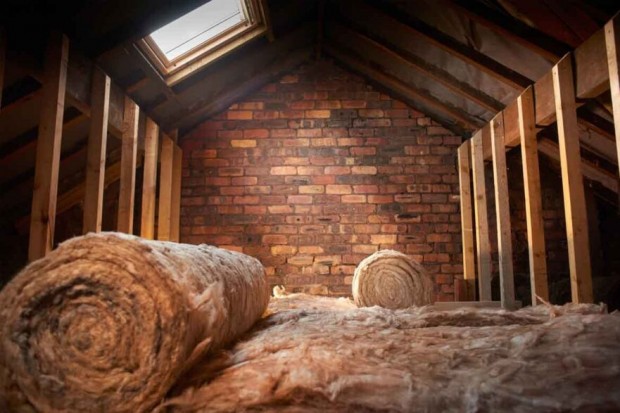Fiberglass is a staple in the construction industry due to its durability and exceptional heat resistance. This makes it ideal for insulation, and its heat transfer effectively contributes to energy efficiency and thermal comfort within buildings.

(Photo : Habitus Living/House Insulator )
Production of Fiberglass
Natural minerals and artificial chemicals are the primary raw ingredients for producing fiberglass products. Silica ash, limestone, and soda ash constitute the main components of this building material. Additional elements that may be present are calcined alumina, borax, feldspar, nepheline syenite, magnesite, and kaolin clay.
As mentioned, soda ash and limestone are mainly utilized to lower the melting temperature, while silica sand is the glass-forming material. Other components, such as borax, which promotes chemical resistance, are also used to enhance specific qualities.
Moreover, fiberglass is composed of the same glass as kitchenware and window panes. During manufacturing, glass is heated until it becomes molten and then forced through skinny holes. As a result, exceedingly thin glass filaments are produced; in fact, they are most accurately measured in microns.
These materials can be made into wider areas or retained in a less structured state, resulting in the more recognizable puffy texture utilized for soundproofing or insulation. Whether the fiberglass filaments are longer or shorter and of what quality determines the ultimate application. Although it is essential for specific applications that the glass fibers contain lower impurities, the manufacturing process must be extended to accommodate this requirement.
Also Read: 7 Green Building Substitutes for Traditional Concrete
Fiberglass Insulator
Batts and rolls, as well as loose-fill insulation, are two of the most prevalent forms of fiberglass insulation. Additionally, rigid boards and duct insulation can be purchased. According to the United States Department of Energy, producers are already producing medium and high-density fiberglass batt insulation materials with an R-value marginally higher than ordinary batts. These materials can be installed in ceilings, floors, and walls that have not yet been finished. Nevertheless, the studs, joists, and beams have a space between them.
Furthermore, fiberglass is manufactured to limit the transmission of heat and cold, whether for home or business insulation projects. Homeowners trying to save a few dollars or who want to install the product themselves as a do-it-yourself job may find that fiberglass is an intelligent option. When used as an insulator, fiberglass helps to reduce the rate at which heat, cold, and sound travel through buildings.
As stated by the International Association of Certified Home Inspectors (InterNACHI), fiberglass accomplishes this by enclosing pockets of air, which keeps rooms warm during the winter and cooler during the summer. Reducing the air that enters and exits a home can make it more pleasant. Remember that fiberglass slows down the flow of air but doesn't stop.
On the other hand, traditional types of insulation, such as fiberglass, are resistant to heat conveyed by conduction. When it comes to efficiency, traditional does not necessarily mean more efficient. Many standard insulation materials, such as fiberglass, tend to provide inadequate protection against air flow, which can lead to discomfort within the home and a loss of energy.
Related Article: 6 Leading Types of Glass Redefining Construction Innovation







